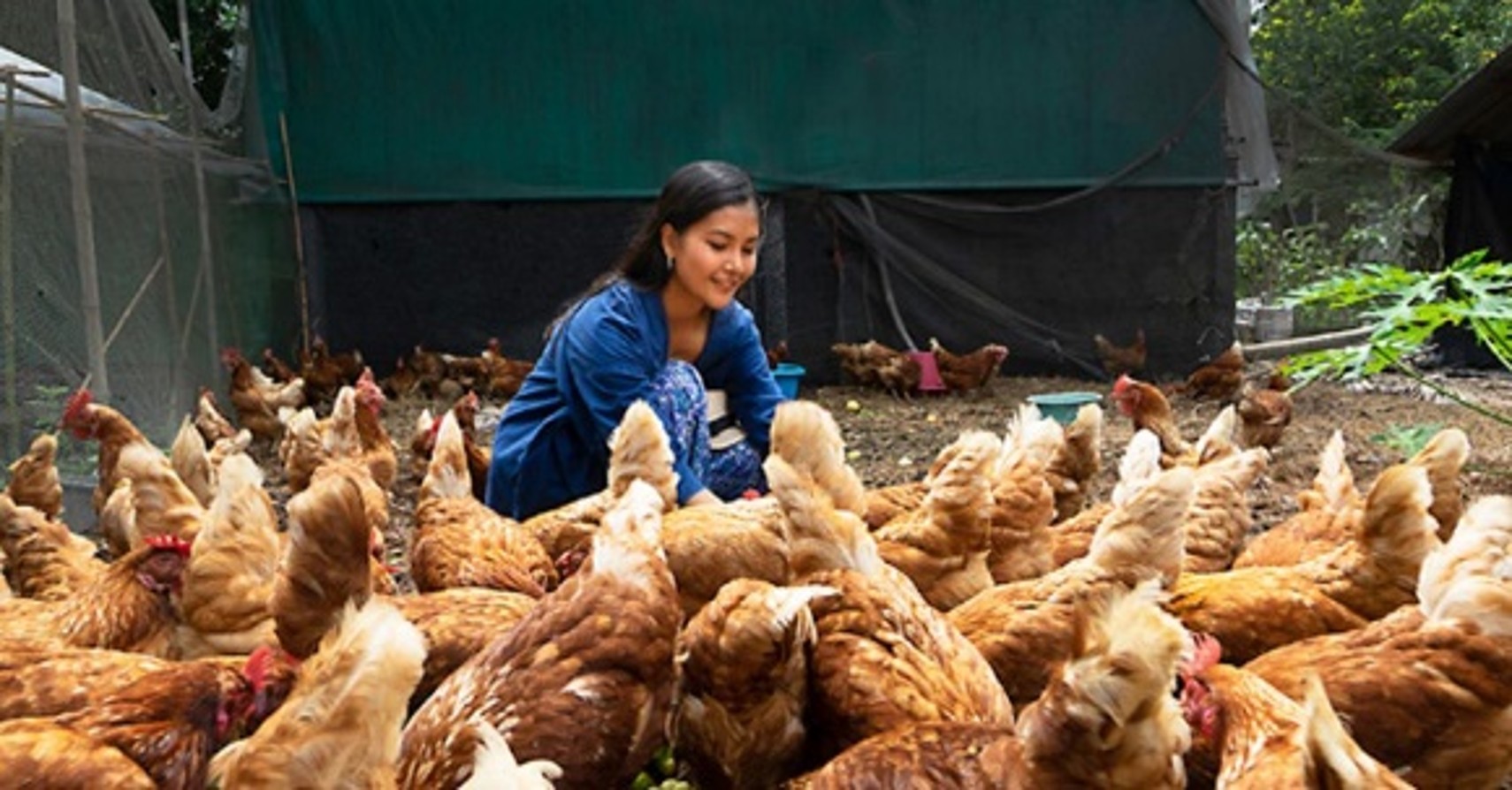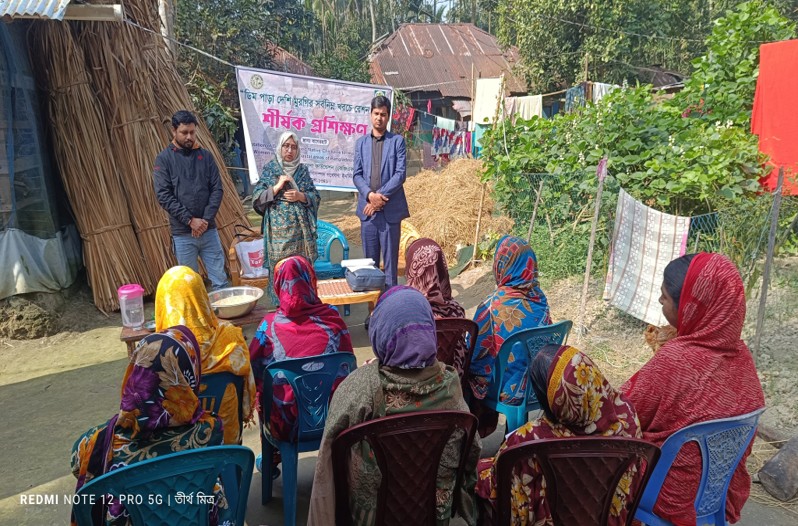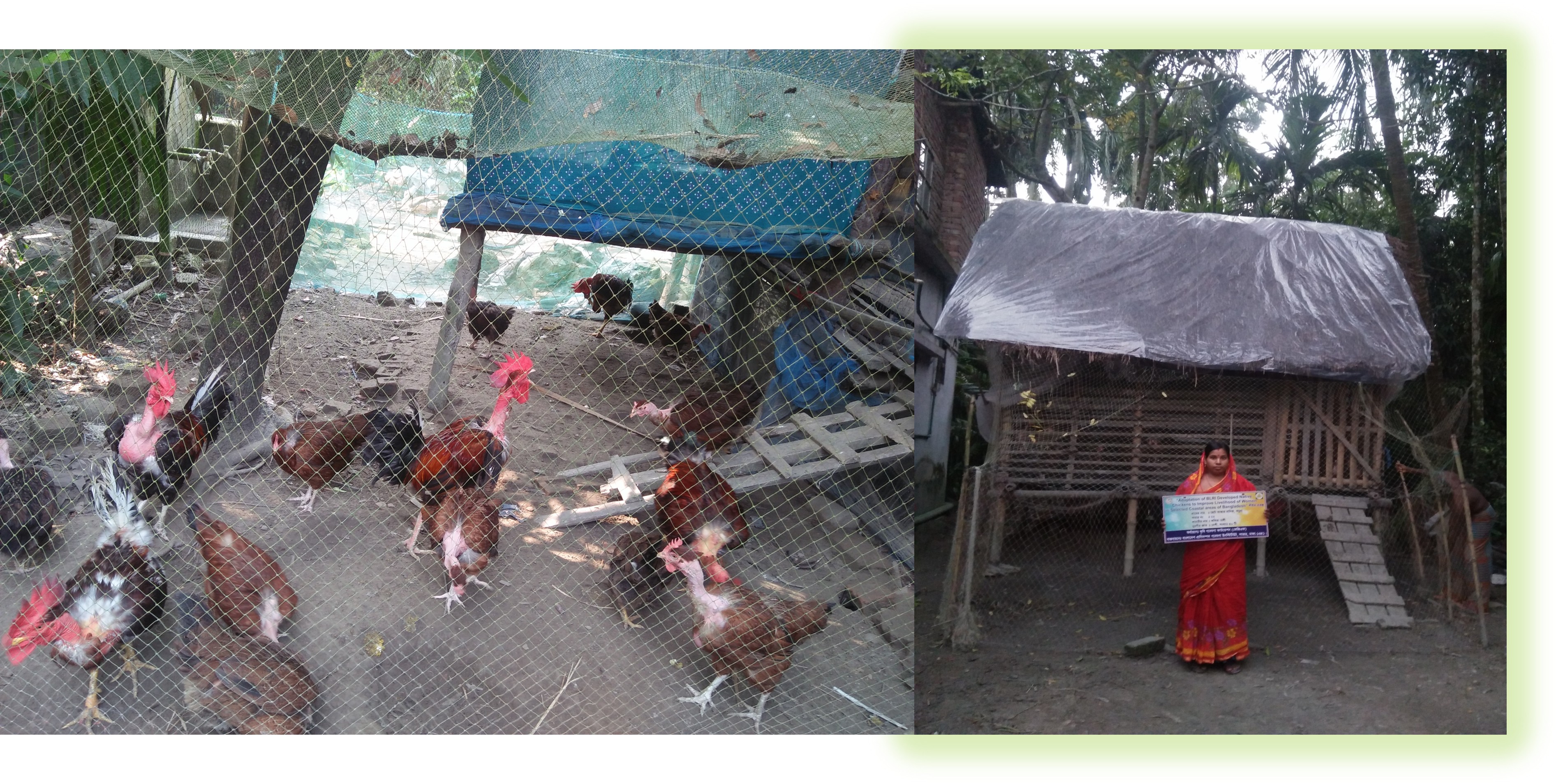Adaptation of BLRI Developed Native Chickens to Improve Livelihood of Women in Selected Coastal areas of Bangladesh
The coastal zone of Bangladesh - 47,201 km2, 32% of the country, around 35 million people, live in the coastal zone. The people living in the coastal area face various vulnerabilities - cyclone, land erosion, flood and salinity etc. The sea level rises due to global climate change make the area more vulnerable. This situation is very alarming for natural resource management as well as for future generation. In this situation, poultry species have seen to provide an effective contribution, Mack, Hoffmann, & Otte, (2005). So, improved varieties chicken of BLRI (Naked Neck and Non-descriptive Desi) rearing technology, adoption and women participation are studying in this project.
The demographic characteristics of surveyed farmers- majority of respondents were female (95.25%) compared to male (04.75%). The average age of the respondent’s was 39.86±1.89 years. The average year of schooling was 6.95±0.65 years indicating the farmers were not much educated only primary level education they have finished. The average body weights of chicks at 1st week of age of ND and NN were found; 56.80 and 60.57g. respectively and the data shown significant difference. The average body weights of growing chicken at 7th week of age were, ND male-655g & female-551g and NN male-630 & female-558g respectively and the difference was significant (P<0.001). Faruque et al. (2007) was found, significant weight gain in CD at 13 weeks of age under intensive management system. These findings revealed that Naked Neck (NN) and Non-Descript Deshi (ND) compare to almost similar performance up to date. 1st year activities have completed successfully. Satisfactory result was obtained and for further activities project work is continued.
According to agricultural census of Bangladesh, a farm household was classified into three categories such as: small (up to 2.4 acres); medium (2.5 to 7.4 acres); and large (7.5 acres or more) (BBS 2011). But respondents are below the small categories’ farmer. egg consumption highest in Kachua Boro Andarmanik (18 no./month); chicken meat consumption highest in koyekha (1.57 no.) but income by sold egg & chicken highest in Mulghar (3184.75 TK) village. According to the Department of Livestock, each Bangladeshi currently on average consumes 104.23 eggs a year, The annual per capita poultry consumption 1.63 kg (2021), which is lower than the average consumption of Bangladeshi people so, we should take serious steps to meet the nutritional needs of the people of coastal areas.
"Market linkages" refer to the connections between producers and buyers within a market. For successful, linkages between farmers and markets different groups will be formulated for table egg, hatching egg, DOC or poultry meat.
Formation of farmers group (women leadership) for practicing improved poultry rearing technology and extension of BLRI improved chicken from one village to other villages.


